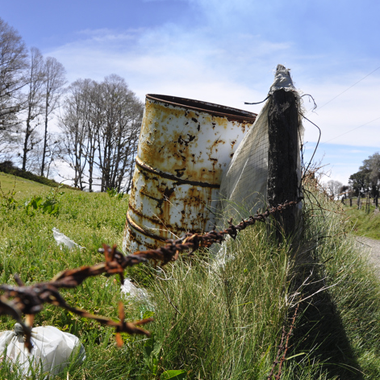
The former US Smelter and Lead Refinery (USS Lead) site recently put the city of East Chicago, Indiana, in the national news spotlight. Although cleanup of the 79-acre USS Lead site was completed in 2007, high levels of lead and arsenic continue to be found at homes near the former smelter. As a result, some 1,200 residents are being displaced, a housing complex is being demolished, and children’s blood is being tested to determine if they have been exposed to excessive levels of lead.
The USS Lead site has been under investigation and cleanup for two decades, yet is posing a real threat to residents today. What can local government leaders do to determine if there are sites within their communities that pose similar risks?
How to Locate Contaminated Sites
The first step is to identify known sources of potential contamination in your community. The Environmental Protection Agency (EPA) maintains several lists of properties that have some level of environmental oversight, including permitting, investigation, and cleanup.
Over 1,800 of the most contaminated legacy sites in the country are designated as Superfund sites. Although they are no longer operating, and thus not generating new wastes, Superfund sites were known to present significant risk at the time they were listed. The Comprehensive Environmental Response, Compensation, and Recovery Act (CERCLA, aka Superfund) was passed in 1980, but new sites continue to be identified – 20 in the last year alone. (Superfund sites can be searched by location here.)
Facilities that actively generate, store, treat or receive hazardous wastes for disposal are regulated by the Resource Conservation and Recovery Act (RCRA). In addition to hazardous waste, RCRA also regulates landfills and underground storage tanks. In most cases, RCRA sites are managed by the state’s environmental agency but EPA maintains a searchable online database of RCRA sites based on biennial reports filed by the facilities. Sites that are known to have a release and are undergoing cleanup will be identified as RCRA Corrective Action sites.
In addition to the federal databases, many states maintain a list of sites that are being addressed through voluntary or other programs. Contact your state’s environmental agency for more information.
Other Places to Look
Survey historical areas in your community where housing now exists on or near a former industrial site. Pay particular attention if that housing was built prior to the 1980s, when there was less awareness of contaminated land and its impacts on human health. If there are residential areas that still rely primarily on private wells for drinking water, look at what potential sources may be upgradient of those homes.
Understand the industrial history in your community. Is or was there a major industry that could have caused significant contamination? For instance, steel mills in the northeast, mining and ore processing operations in the west, and wood treating facilities throughout the country have left significant impacts on the environment. Be aware that contamination can spread beyond a facility’s boundaries by surface water discharges, smokestack emissions, or fugitive dust.
Sorting through the data
Information gleaned from state and federal resources is often voluminous, highly technical, and mired in regulatory language that can be hard to decipher. EPA and state agencies issue fact sheets in some cases, but they will only scratch the surface of the history and status of the site. You might want to reach out to a local environmental consulting firm or other environmental expert for help in digesting the available information and determining which sites might pose risks to your community.
Being Prepared
Environmental issues such as those being experienced in East Chicago should be included in any contingency planning your community undertakes. Communications plans, identification of alternate drinking water supplies, and temporary housing are a few of the things to address. A little advance planning can help you be prepared should a toxic site be discovered in your community.
There are more resources available on our brownfields topic page.
New, Reduced Membership Dues
A new, reduced dues rate is available for CAOs/ACAOs, along with additional discounts for those in smaller communities, has been implemented. Learn more and be sure to join or renew today!
